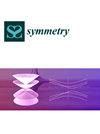Statistical Fuzzy Reliability Analysis: An Explanation with Generalized Intuitionistic Fuzzy Lomax Distribution
IF 2.2
3区 综合性期刊
Q2 MULTIDISCIPLINARY SCIENCES
引用次数: 0
Abstract
To illustrate data uncertainty, intuitionistic fuzzy sets simply use membership and non-membership degrees. However, in some cases, a more complex strategy is required to deal with imprecise data. One of these techniques is generalized intuitionistic fuzzy sets (GIFSs), which provide a comprehensive framework by adding extra factors that provide a more realistic explanation for uncertainty. GIFSs contain generalized membership, non-membership, and hesitation degrees for establishing symmetry around a reference point. In this paper, we applied a generalized intuitionistic fuzzy set approach to investigate ambiguity in the parameter of the Lomax life distribution, seeking a more symmetric assessment of the reliability measurements. Several reliability measurements and associated cut sets for a novel L-R type fuzzy sets are derived after establishing the scale parameter as a generalized intuitionistic fuzzy number. Additionally, the study includes a range of reliability measurements, such as odds, hazards, reliability functions, etc., that are designed for the Lomax distribution within the framework of generalized intuitionistic fuzzy sets. These reliability measurements are an essential tool for evaluating the reliability characteristics of various types of complex systems. For the purpose of interpretation and application, the results are visually displayed and compared across different cut set values using a numerical example.统计模糊可靠性分析:广义直觉模糊洛max分布的解释
为了说明数据的不确定性,直觉模糊集简单地使用隶属度和非隶属度。然而,在某些情况下,需要更复杂的策略来处理不精确的数据。其中一种技术是广义直觉模糊集(GIFSs),它通过添加额外的因素提供了一个全面的框架,为不确定性提供了一个更现实的解释。gif包含广义隶属度、非隶属度和在参考点周围建立对称的犹豫度。本文应用广义直觉模糊集方法研究了Lomax寿命分布参数的模糊性,寻求一种更对称的可靠性测量评估方法。在将尺度参数建立为广义直觉模糊数的基础上,导出了一种新型L-R型模糊集的若干可靠性测度和相关切集。此外,本文还在广义直觉模糊集的框架内为Lomax分布设计了一系列可靠性度量,如概率、风险、可靠性函数等。这些可靠性测量是评估各种类型复杂系统可靠性特性的重要工具。为了解释和应用的目的,结果被可视化地显示,并通过一个数值例子在不同的切割集值之间进行比较。
本文章由计算机程序翻译,如有差异,请以英文原文为准。
求助全文
约1分钟内获得全文
求助全文
来源期刊

Symmetry-Basel
MULTIDISCIPLINARY SCIENCES-
CiteScore
5.40
自引率
11.10%
发文量
2276
审稿时长
14.88 days
期刊介绍:
Symmetry (ISSN 2073-8994), an international and interdisciplinary scientific journal, publishes reviews, regular research papers and short notes. Our aim is to encourage scientists to publish their experimental and theoretical research in as much detail as possible. There is no restriction on the length of the papers. Full experimental and/or methodical details must be provided, so that results can be reproduced.
 求助内容:
求助内容: 应助结果提醒方式:
应助结果提醒方式:


